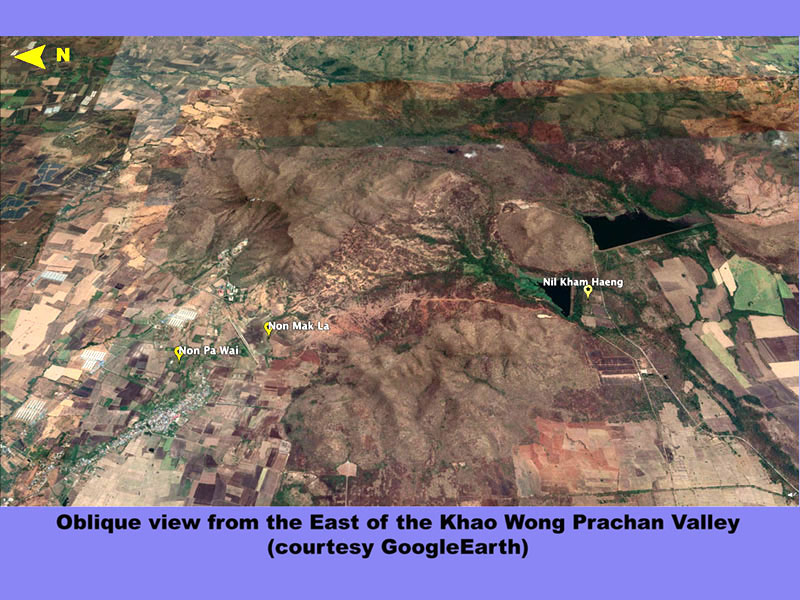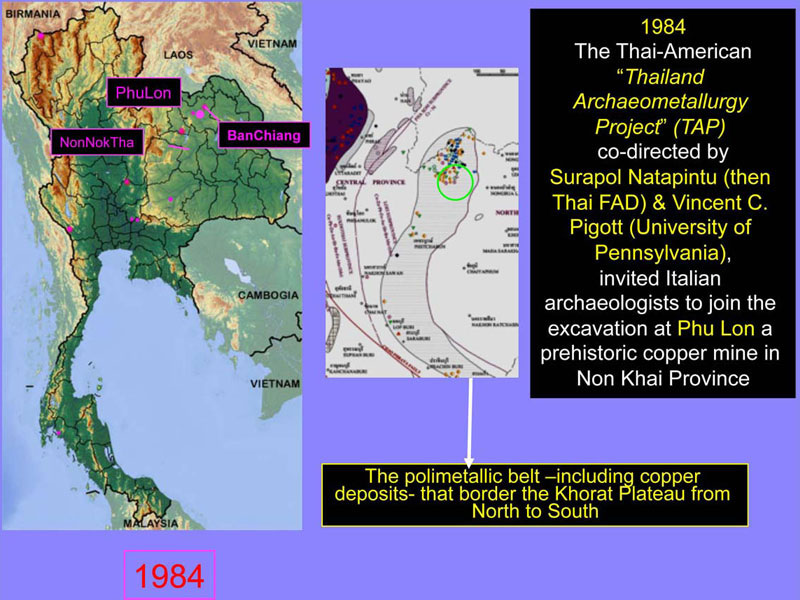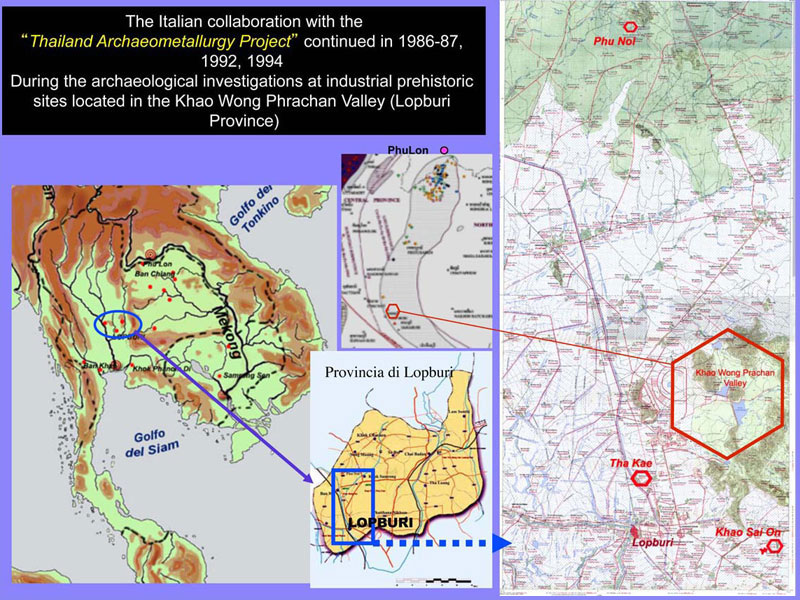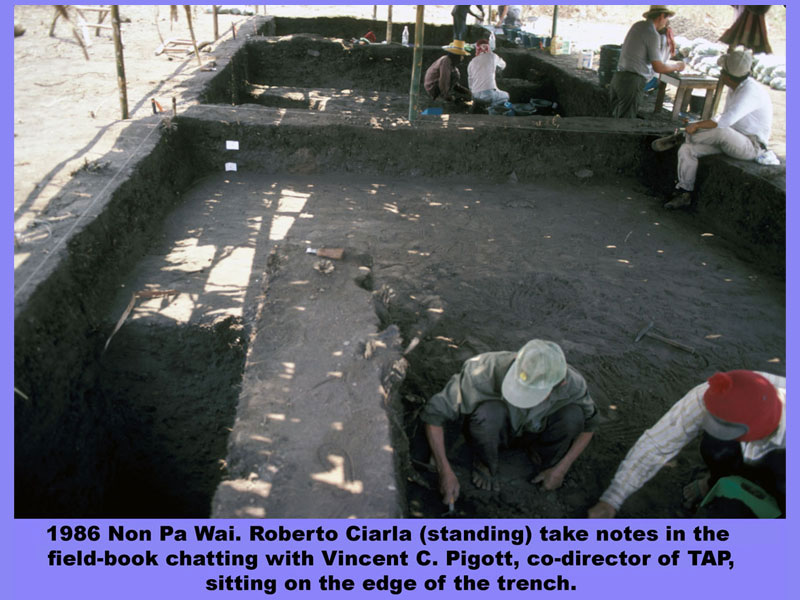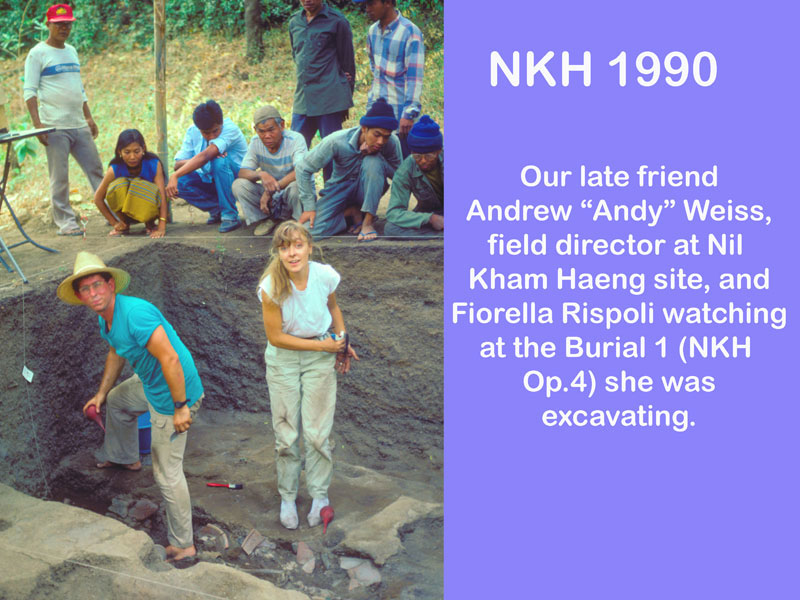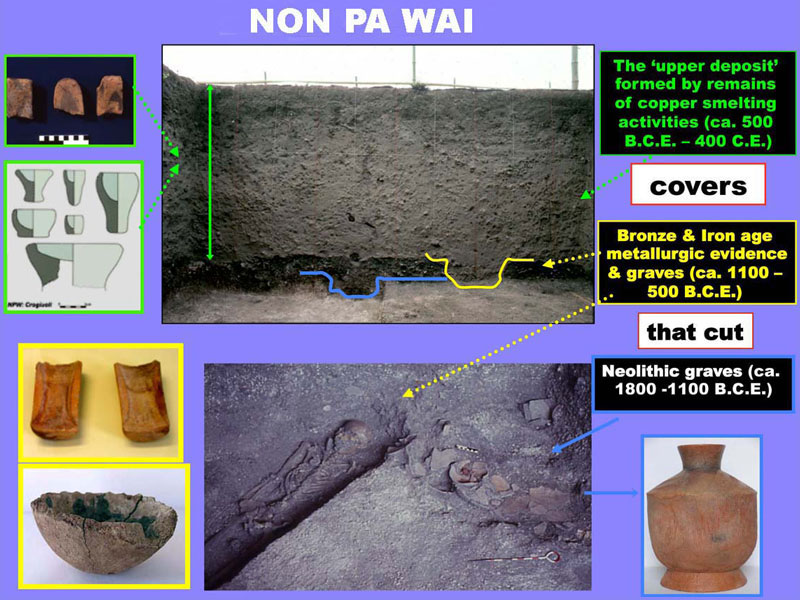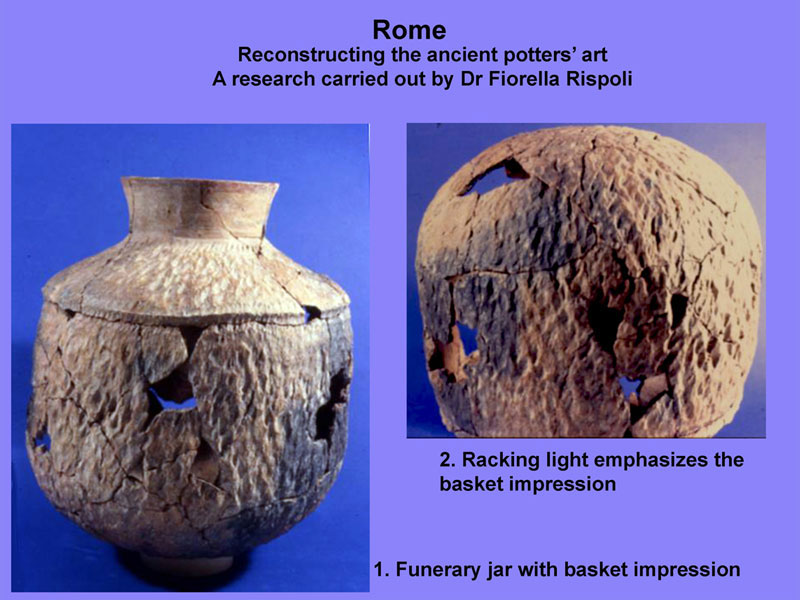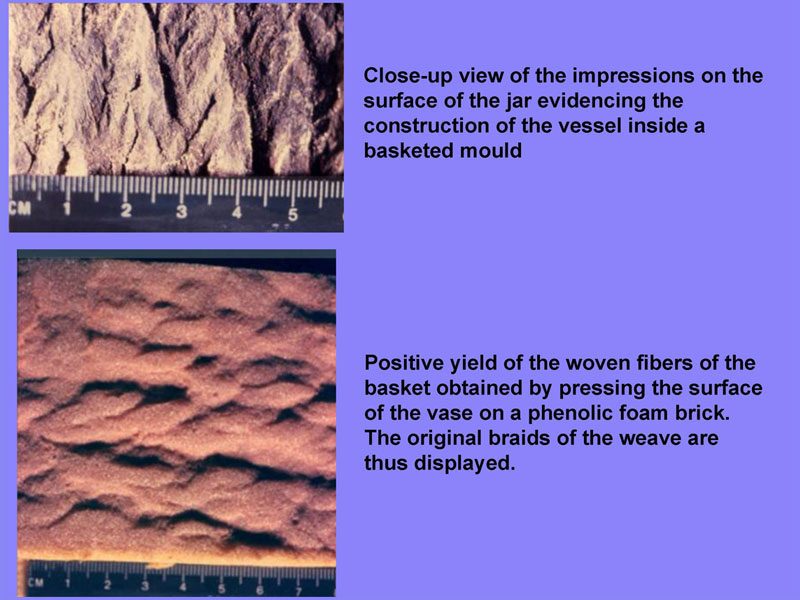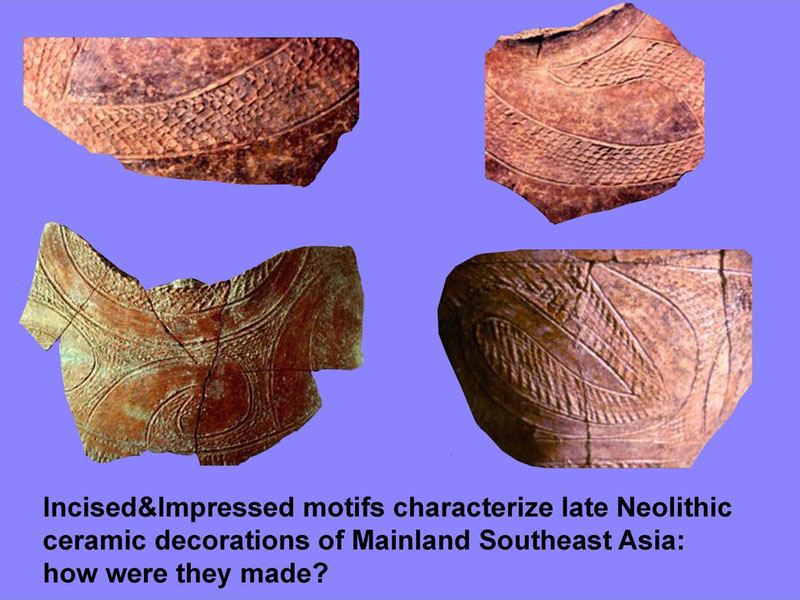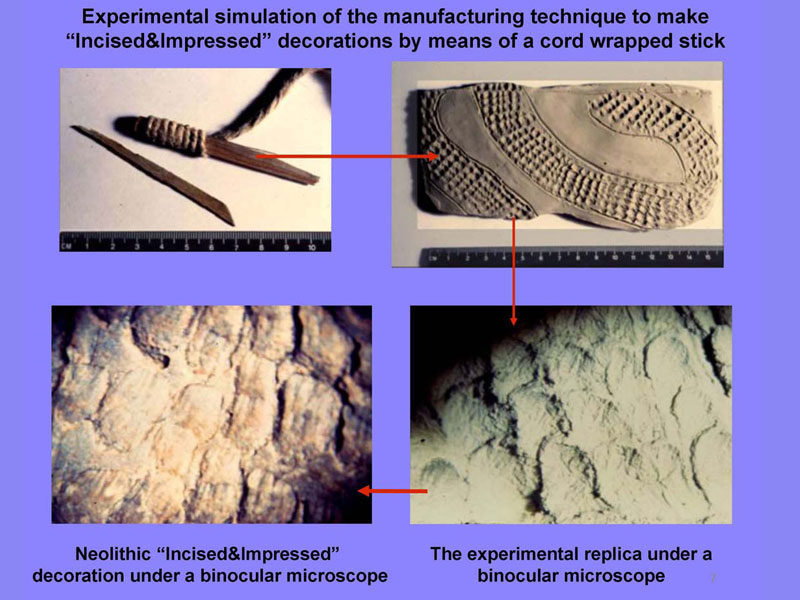LoRAP and TAP collaboration
From 1986 to 1994 the Thai-American ‘Thailand Archaeometallurgy Project’ (TAP), co-directed by Surapol Natapintu (formerly Thai Fine Arts Department) and Vincent C. Pigott (MASCA-University of Pennsylvania), excavated three sites in the Khao Wong Phrachan Valley: Non Pa Wai, Nil Kham Haeng and Non Mak La (Khok Samrong District, Lopburi Prov.) (Fig.s 1-2).
The Italian-Thai LoRAP, in addition to having participated in the stratigraphic investigations at the three sites, has established a close relationship of scientific collaboration with the TAP aimed at defining the first chronological and cultural sequence of the prehistory and protohistory of Central Thailand (ca. early 2nd millennium BCE – end of 1st millennium CE).
In the KWPV sites the stratigraphic investigations revealed a complex sequence of phases of human activities ranging from the Neolithic (c. 2000-1100 BCE) to the Dvaravati Period (c. 600-1000 CE) (Fig. 3).
Large Neolithic cemeteries were documented in Non Pa Wai and Non Mak La.
The burials, consisting of single inhumations in simple pits, were accompanied by ceramic vessels built with the paddle-and-anvil technique, or with slabs impressed in a basket (so-called “basketed surface”). These vases were decorated with a layer or band of Thick Red Burnished Slip, and/or with ‘Incised&Impressed’ meandering motifs. Personal ornaments included disc-shaped marble pendants, disc-shaped and H-shaped shell beads and small polished stone adzes. A single valve of freshwater clam positioned on the body and/or on the face point out a ritual act widely shared in Central and Northeast Thailand (Fig.s 4-6).
In particular, Fiorella Rispoli was assigned the typological and technological study (including manufacturing and decoration techniques) of the ceramics the TAP excavated in the Khao Wong Phrachan Valley. This comprehensive study led to the identification of vascular classes to be considered the ‘guide fossils’ of the ceramic sequences in the Lopburi Plain and beyond (Fig.s 7-9).
The LoRAP-TAP collaborative research, based on the results of excavations at seven pre- protohistoric sites (Tha Kae, Phu Noi, Noen Din, Khok Din, Non Pa Wai, Nil Kham Haeng, Non Mak La), and on data gathered from published literature, filled a significant gap in Thailand’s pre- protohistory, having also identified important cultural interactions ranging into southern China and Mainland Southeast Asia that, according to F. Rispoli, led to the formation in the 2nd millennium BCE of the ‘Southeast Asian Interaction Sphere’. Within this interaction sphere exotic goods and raw materials were exchanged among communities that shared similar mortuary rituals, symbolic decorative motifs, ceramic vessels’ types, and personal ornaments (Fig.s 10-12).
This interaction sphere, at the end of the 2nd millennium BCE, facilitated the transmission of copper metallurgy from Southeast (and possibly Southwest) China into Thailand, where it reached the communities of the Lopburi Plain, who took advantage of their ore-rich environment.
